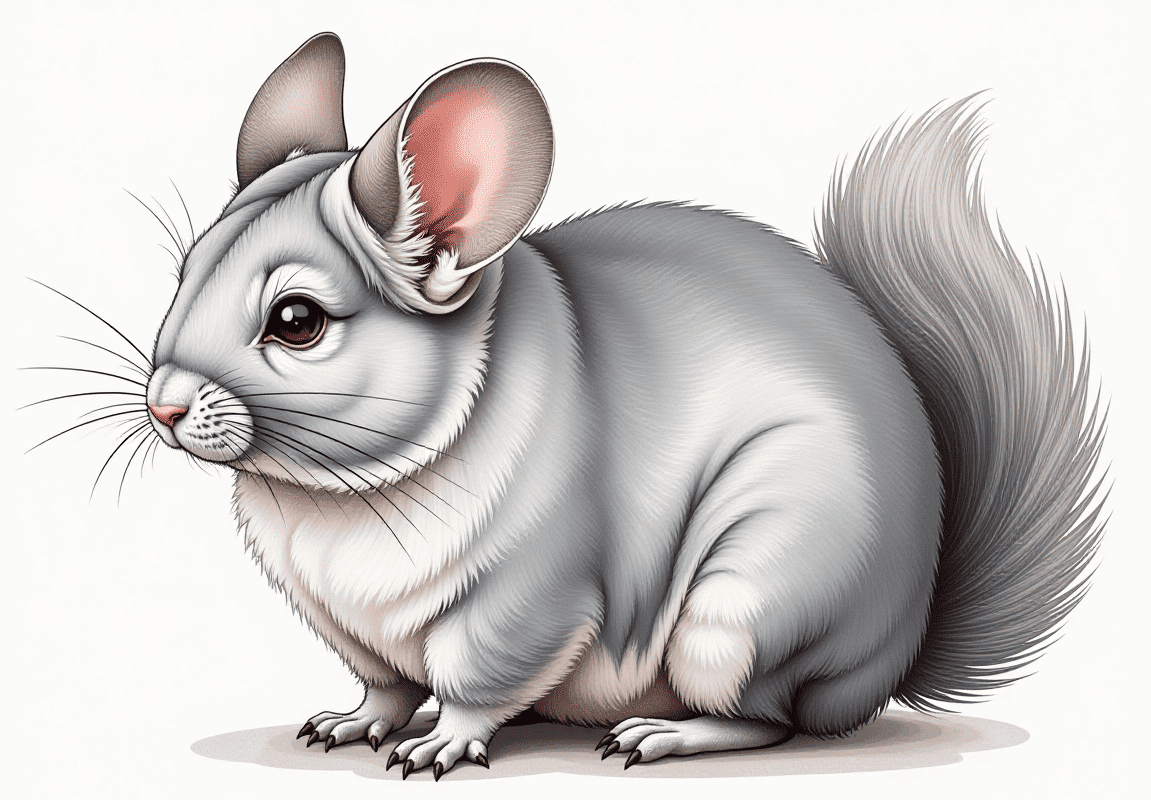How Do Chinchillas Mate?
The Challenge of Chinchilla Breeding
If you’ve ever considered breeding chinchillas, you might think it’s as simple as pairing a male and a female. However, chinchilla mating is more complex than it appears. Without proper knowledge, you risk unsuccessful pairings, stress, or even aggression between mates. Additionally, breeding without preparation can lead to health issues for both the parents and offspring, making it essential to understand the process in detail.
Understanding Chinchilla Mating Behavior
Chinchillas are seasonal breeders, typically mating from November to May. Female chinchillas (does) experience estrus cycles every 25 to 35 days, with receptivity lasting only a few hours. Because of this short window, monitoring the female’s behavior is crucial to determining the best time for mating.
Males (bucks) may display courtship behaviors such as chasing, grooming, and vocalizing. If the female is receptive, she will allow the male to mount her. However, if she is not interested, she may respond aggressively by making warning sounds or even spraying urine at the male. This territorial behavior can lead to fights if the introduction is not handled correctly.
In the wild, chinchillas form monogamous or small group pairings. In captivity, successful mating often requires a controlled environment to mimic their natural instincts. Factors like temperature, diet, and stress levels play a significant role in reproductive success. Ignoring these elements can result in failed pregnancies or even health complications for the female.
Ensuring a Safe and Successful Mating Process
To encourage a successful mating experience for chinchillas, follow these steps:

- Pairing Carefully – Introduce chinchillas gradually. Start with separate cages close to each other, allowing them to get used to each other’s presence before direct contact. This prevents stress and reduces the risk of aggressive encounters.
- Monitor Behavior – Watch for signs of acceptance, such as mutual grooming, calm interactions, and the absence of aggressive lunging. If aggression occurs, separate them and try reintroducing later. Some pairs may take weeks or even months to bond properly.
- Optimal Environment – Keep the temperature below 70°F (21°C) to prevent heat stress. Chinchillas are highly sensitive to temperature changes, and overheating can affect fertility. Ensure they have a quiet, stress-free space with minimal disturbances to encourage natural behavior.
- Proper Nutrition – A balanced diet is essential for reproductive health. Ensure both the male and female receive high-quality hay, pellets, and fresh water. Providing additional supplements, such as calcium and protein, can help support a successful pregnancy.
- Identifying Pregnancy – If mating is successful, pregnancy lasts about 111 days. Signs of pregnancy include weight gain, increased appetite, and possible behavioral changes such as territoriality. Avoid unnecessary handling of the female during this time to minimize stress.
- Birth and Postnatal Care – Chinchillas typically give birth to one to three kits, which are born fully furred and with open eyes. The mother should have a quiet and comfortable nesting area. Provide ample nutrition and fresh water to support lactation. Kits will begin eating solid food within a few weeks but should remain with their mother for at least eight weeks before weaning.
Potential Challenges and Considerations
- Infertility Issues: Some chinchillas may have difficulty conceiving due to genetic factors, age, or improper diet. If multiple attempts at breeding fail, consulting a veterinarian may help identify underlying issues.
- Birthing Complications: Although most chinchillas give birth without problems, complications such as dystocia (difficult labor) can occur. Monitoring the female closely near the end of pregnancy can help catch any signs of distress early.
- Overbreeding Risks: Breeding a female too frequently can lead to exhaustion and health problems. It is recommended to allow females at least six months of recovery between pregnancies.
Conclusion
Chinchilla mating requires patience, knowledge, and the right conditions. By understanding their natural breeding behavior and providing a safe environment, you can ensure a successful and stress-free mating experience. If you’re new to chinchilla breeding, consider consulting a vet or an experienced breeder to guide you through the process.
Breeding chinchillas isn’t just about increasing their numbers—it’s about ensuring their health, safety, and well-being. With the right approach, you can make the experience positive for both the parents and their future kits. Whether you’re breeding for companionship or conservation, responsible breeding practices are essential for the long-term health of these animals.
